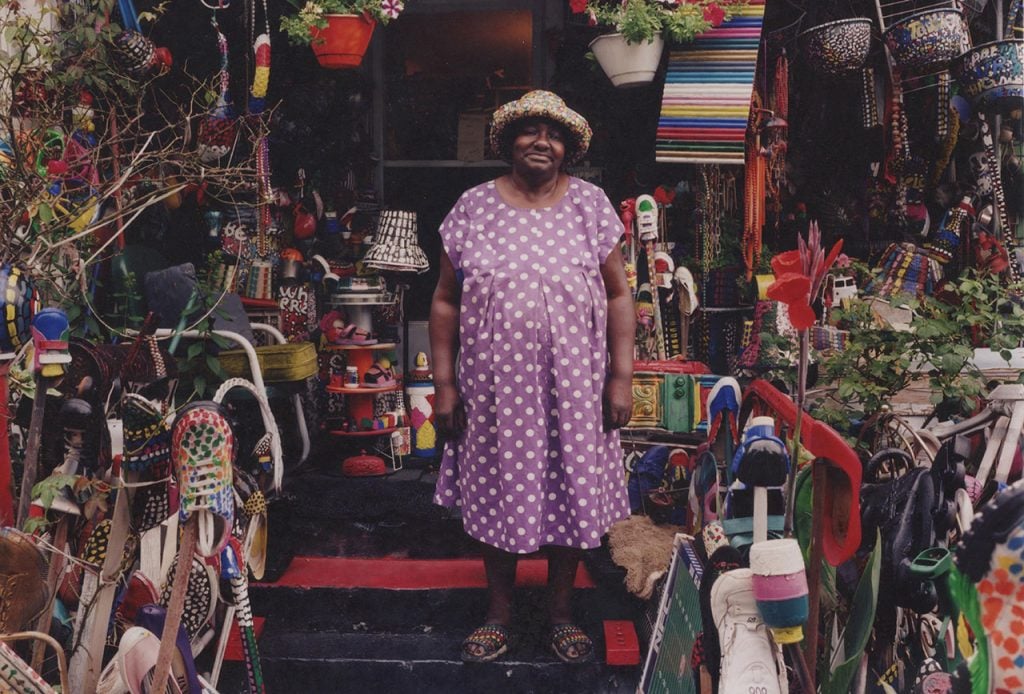22 August 2024
Museums & Institutions
It’s the first time the home-studio of an African American woman visual artist is being recognized by the registry.

The latest addition to the National Register of Historic Places is the Kosciusko, Mississippi, home of L.V. Hull, a self-taught African American artist who transformed her house into a vibrant art environment.
This the registry’s first home-studio of an African American woman visual artist, and first home art environment created by an African American of either sex.
“Women, and particularly women of color, are woefully underrepresented across all forms of designation that are intended to recognize places of historic and cultural importance,” Christina Morris, senior director of the Where Women Made History initiative of the National Trust for Historic Preservation, said in a statement. “This listing of Hull’s home signals a critical change in the way we understand the achievements of women artists and Black women at the local, state, and national levels.”
The designation came on the 50th anniversary of Hull’s purchase of the property, for just $7,000 on August 12, 1974.
“It’s in a Black neighborhood with homes that weren’t particularly highly valued, but [Hull] ended up creating this beacon for the world and attracted people from all over. She said, ‘what happens here is valuable,’“ Hull’s friend, Yaphet Smith, told the National Trust for Historic Preservation.
She began turning the house into an artwork in 1975, using found materials such as old Easter baskets, hubcaps, and discarded shoes to build assemblages in the yard. Boldly painted with her signature dots, Hull’s designs eventually began attracting visitors from around the world.
“When I started decorating the yard, I wanted to do something that somebody else wasn’t going to do.… I waited until folks went to sleep and dragged the tires from behind their houses. I didn’t want nobody to see me ’cause I didn’t want to hear the stuff they would say about me. People said stuff anyway: ‘Old L.V., she’s crazy,’” Hull told William Arnett, founder of the Souls Grown Deep Foundation, a nonprofit that promotes the work of Black Southern artists, in 1997. “The idea of painting was always in my mind waiting for its time to come out.”
Hull’s home has been unoccupied since the self-proclaimed “unusual” artist’s death 16 years ago. Smith purchased the home in 2021 in the hope of saving the unique property. By that point, it had fallen into disrepair due to exposure to the elements as well as vandalism.
In 2023, the National Trust for Historic Preservation named Hull’s home as one of the 11 most endangered historic places in the U.S. Many other notable art environments by self-taught Black artists, such as Nellie Mae Rowe’s Atlanta “Playhouse,” are gone, known only through photographs.
But Smith is determined not to let that happen to Hull’s incredible creation. His nonprofit, the Keysmith Foundation, is fundraising $400,000 to stabilize, restore, and upgrade the home. The plan is to open the L.V. Hull Legacy Center in 2025. Work is being done by Belinda Stewart Architects, with a $315,000 grant from the Mississippi Arts Commission’s Building Fund for the Arts.
Their preservation efforts will likely get a boost next year, when the Mississippi Museum of Art holds a solo show of Hull’s work. Smith is also working on a one-hour documentary about the artist, titled Love Is a Sensation.
The Kohler Foundation conserved the rest of Hull’s artwork, a collection of some 850 works, in 2022. The art, none of it is currently installed in Hull’s home, belongs to the Arts Foundation of Kosciusko.
“It’s important to have an accurate story of creativity in America, and including her home on the National Register helps achieve that goal,” Smith told the Art Newspaper. “Hopefully, it will be a catalyst for preserving the spaces and stories of other African American artists, and particularly women.”
Follow Artnet News on Facebook:
Want to stay ahead of the art world? Subscribe to our newsletter to get the breaking news, eye-opening interviews, and incisive critical takes that drive the conversation forward.
Article topics
More Trending Stories
This post was originally published on this site be sure to check out more of their content









